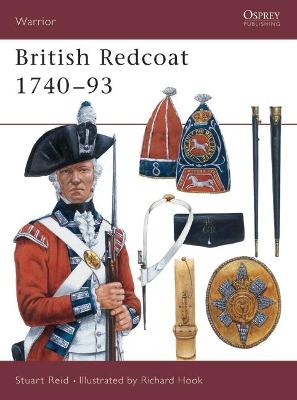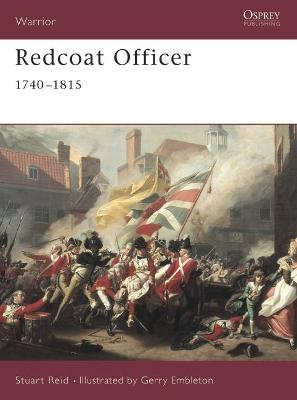Warrior S.
4 primary works
Book 19
During this period, the British army earned itself a formidable reputation as a fighting force. However, due to its role as a police force at home, and demonisation by American propaganda, the army was viewed as little removed from a penal institution run by aristocratic dilettantes. This view, still held by many today, is challenged by Stuart Reid, who paints a picture of an increasingly professional force. This was an important time of change and improvement for the British Army, and British Redcoat 1740-1793 fully brings this out in its comprehensive examination of the lives, conditions and experiences of the late 18th-century infantryman.
Book 20
In 1783 the British army struggled home from North America in a shattered condition. It had acquitted itself well, but its regiments were now woefully understrength, and it was not until 1789 that they were again fit for service. Little more than three years later, Republican France declared war, and, apart from two short periods, the army was to be heavily engaged around the globe for the next 23 years. Beginning where Warrior 19 British Redcoat 1740-93 ends, Stuart Reid shows how the army was re-organised, re-equipped, re-trained and led from the bitter struggle in the West Indies to the final reckoning at Waterloo.
Book 21
The Scottish clans were comprised of an agricultural peasantry dominated by a warrior aristocracy. The author details the development of this clan system and their interaction with one another, which often led to conflict. The rise and fall of the Jacobite cause under Bonny Prince Charlie in the 1745 rebellion is extensively covered, and their battle tactics at Culloden are analyzed as to why they were so utterly defeated.
Book 42
The commissioned officer ranks in the British Army from 1740-1815 were almost entirely composed of the affluent and educated - the sons of the landed gentry, the wealthy, and other professional people. This title looks at the enlistment, training, daily life and combat experiences of the typical British officer in the crucial periods of the North American conflicts, the Revolution, and the Napoleonic Wars. It compliments the author's previous treatments in Warrior 19 British Redcoat 1740-93 and Warrior 20 British Redcoat (2) 1793-1815, which deal exclusively with the common infantryman, and balances these discussions through a look at the 'fellows in silk stockings'. Particular emphasis is placed on the experiences and activities in North America in the late 18th century.



